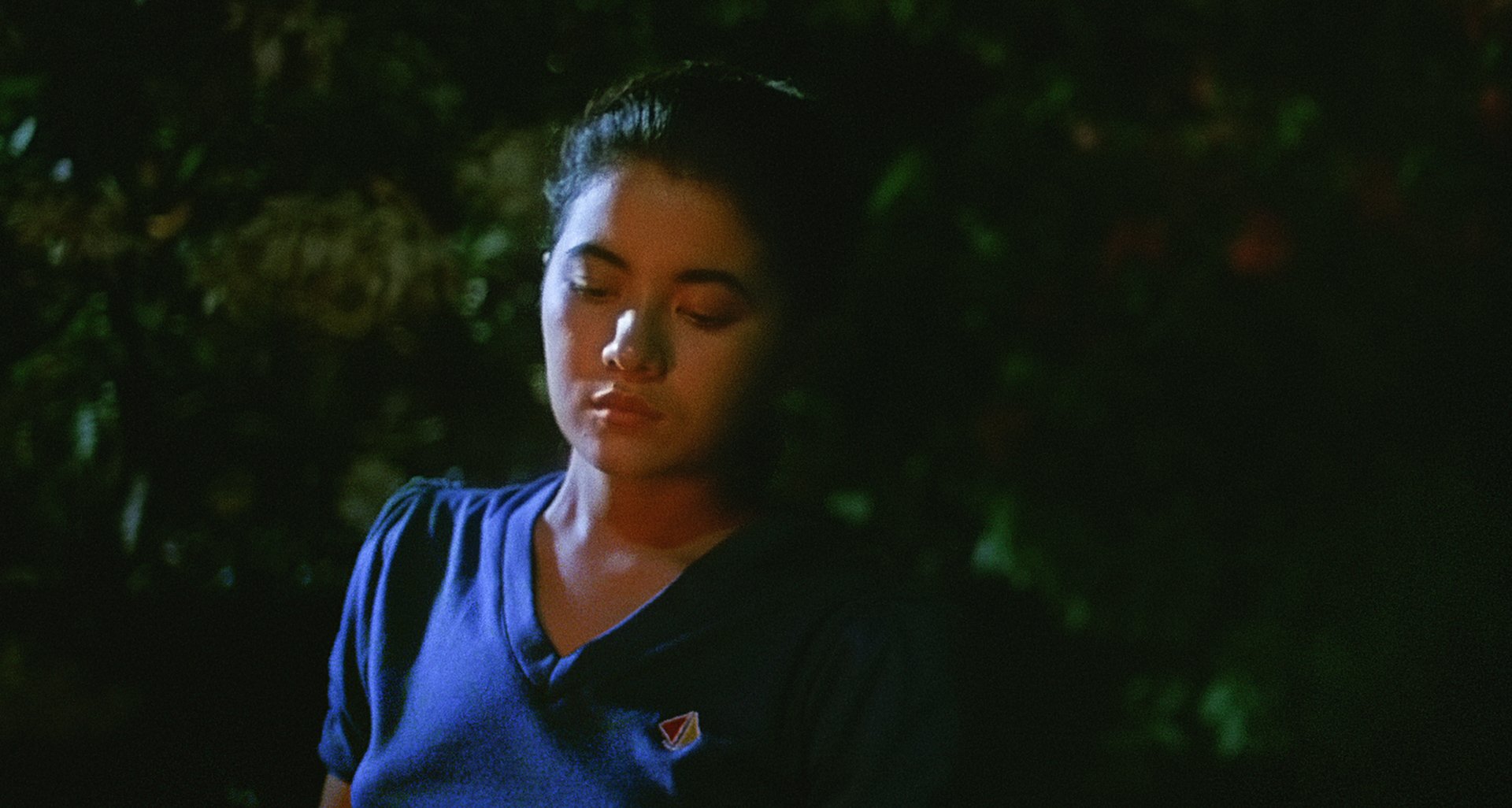Diaz-Abaya’s "Moral" Mirrors the Dispiriting Decades
/Marilou Diaz-Abaya’s “Moral”, starring (L-R) Lorna Tolentino, Gina Alajar, Sandy Andolong and Anna Marin
Marilou Diaz-Abaya
In 1972, then-President Marcos’ coup d’etat instigated a dictatorial regime, first by declaring martial law, then rule by Presidential Decrees. Official Martial Law lasted until 1981, but Marcos’ dictatorship endured until 1986, when he was finally ousted by a popular uprising.
Naturally, these events figure in the work of both artists; one in the visual arts, the other in cinema. As women artists, rarities in the traditional “boys club” of the art community, Diaz-Abaya and Abad worked twice as hard to break through restricted fields. Abad demands a separate treatment given her unique position among Filipino women visual artists. This article will focus on Diaz-Abaya, who was honored posthumously with a National Artist Award for Film and Broadcast in 2022. On October 8, 2023, her remains were transferred to the Libingan ng mga Bayani (Heroes’ Cemetery).
FACINE, a San Francisco nonprofit dedicated to the promotion of filmmaking from the Philippines and in the diaspora, treated a San Francisco Public Library audience to an in-depth look at the life and film aesthetics of Diaz-Abaya.
Like Abad, Diaz-Abaya came from the better-off sector of Manila society, and in her younger years did not plan to be in the art discipline she became known for. For talented women then, the obvious paths were in medicine or law. Diaz-Abaya also had her epiphany abroad, as tag-along to husband, Manolo, a recognized cinematographer, she went to Marymount Loyola for film studies. She eventually earned an MA in Film and TV from the same university and proceeded to complete a film course in London.
Diaz-Abaya’s first film, Tanikala (Shackle), marked her entry as a woman film director. With independent producers Jesse Ejercito’s support, she next directed Brutal in collaboration with screenwriter Ricky Lee, the first of a trilogy on issues of womanhood in the early years of Martial Law.
In Moral, Diaz-Abaya dissects a section of Manila suburban life during ten years after the declaration of Martial Law by President Marcos. Although Marcos lifted some formalities of Martial Law, such as curfews and prohibition of mass assemblies, the pall of dictatorship persisted with arbitrary arrest and incarceration, torture, forced disappearances and proto-extra-judicial killing method summary executions.
“Like many filmmakers, Marilou Diaz-Abaya tested the limited space granted by Imelda Marcos’ patronage of the arts.”
Diaz-Abaya depicts the illusory mist of liberty in the lives of the four female classmates from the elite University of the Philippines: Maritess, Silvia, Joey, and Kathy. It was a period of testing the boundaries of freedom of expression, gender relationships, single motherhood, homosexuality, and sexual violence within the context of dictatorial rule. With irony, Moral deftly undermines Marcos’ “New Society” vision of social discipline as the cure for Filipino under-development.
The film follows the struggles of the four former classmates who try to fulfill individual desires and ambitions against existing conservative dictates, taboos, and social norms. Manila of the period is rife with weed, alcohol, macho men dancers, and bisexuality, under a conservative politico-religious disposition congealed by state repression. Knowledgeable Filipinos call this the period of dictatorship via Marcos’ Presidential Orders. Most audiences watching this in 1982 understood the film’s understated context. Diaz-Abaya plots the trajectory of the four middle-class young women, a sorority, if you will, and poses the question: Given their psychology and the social circumstances, what are the possibilities ahead of them? Diaz-Abaya offers four that viewers may imagine given the circumstances.
Kathy, who comes from a rigid Catholic family, ambitiously wants to be a singer despite having little natural talent. Her desire to succeed at all costs includes having sex with her promoter and a lesbian agent. Of Kathy, more later.
Gina Alajar plays “Kathy” in “Moral”
There’s Joey, who is deserted by parents and ping-pongs between them. She engages in promiscuous sex in search of true heterosexual relationships. She tries to seduce classmate Jerry, an activist. But Jerry is true to his activist girlfriend, Nita. Finding Jerry with his girlfriend in bed throws Joey into an emotional spiral; she ends up with an unwanted pregnancy and an abortion that nearly costs her life. She begins her journey from reckless abandon to self-respect and responsibility by volunteering for an orphanage school. Jerry goes underground and asks Joey to shelter his pregnant wife, Nita. Joey and Nita develop a friendship, but Nita later must return to the underground after Jerry is killed trying to evade capture by the military.
Lorna Tolentino portrays “Joey” in “Moral”
There’s Maritess who is trapped in an oppressive feudal family that sees children as wealth. Her desire to be a writer is thwarted by a controlling husband who wields power over her by shackling her with yearly pregnancies. Maritess finally walks out on the family and seeks refuge and counsel from Sylvia, who advices her to insist on a fair marriage. Embarrassed by the situation, the husband accepts Maritess’ demand that he leaves the household, share the rent, and allow her to work.
Finally there’s Sylvia. Left by her husband, Robert, for a male lover, they share custody of a son while she finishes college, works as a schoolteacher, and takes up law studies. An independent and liberated woman (she politely declines additional alimony from her ex), Sylvia quits teaching after being reprimanded for coming to school bra-less. Objecting to an assault on her personal freedom, she resigns by turning in her bra to the principal. However, she falls for the false intentions of a colleague who preys on her liberal stance until she discovers he has a wife, and that she is the third mistress among four.
Sylvia meets her husband’s partner, Celso, who has a job as a macho dancer and risks being harmed by an aggressive lover. Silvia discovers that Robert and Celso have true and caring feelings for each other, especially after she finds out her ex-husband is an accomplished painter. Sylvia then reconciles with being part of this unusual family. When she asks their son if he wants to be lawyer, he proclaims his wish to be a painter like his dad. I see this transformation as Diaz-Abaya’s aesthetic statement, that Art transcends everything.
The genius of Diaz-Abaya’s filmmaking in Moral is how she uses the camera to evoke a progression in the lives of the young women. She plants precognitive visual scenes that connect the characters’ emotional states. The camera never leaves this seamless progression. The psychological effect is the power of film, which the viewing public can now experience, thanks to ABS-CBN’s preservation efforts.
The celluloid prints of Moral had deteriorated, but fortunately an existing copy in good condition was available for digitization. ABS-CBN has taken the noble responsibility of preserving celluloid films amid the lack of a national program for preservation. Moral is an example of this effort, and it shows. For only in wide-screen format is the craft of Diaz-Abaya or a capable director could be appreciated. The eye-brain combination makes the filmmakers’ intention salient. In wide screen, the high-resolution digital images from the camera’s POV never leaves the mind’s eye. The lives of the four women are assembled in montage that seamlessly moves from one dilemma to another by the skillful use of continuity shots and coded sign-posting. When Joey goes with Jerry to his apartment presumably to review for an exam (for Joey it’s a perfect time to seduce him), she checks out the apartment and peers through the wooden jalousies to let in fresh air and comment on the greenery outside. Sometime later, in an impulse visit to Jerry to demand his love for her, she goes to his apartment. Her knocks at the door unanswered, she goes to the very same window, peers through the wooden blinds from the outside only to see Jerry in bed with Nita. Are these visual signals intentional? If not, they show Diaz-Abaya’s intuition of how the mind’s eye operates to stitch images in the brain to fill in the story line. The final effect is that even with multiple events that intersect these women’s lives, Diaz-Abaya is able to show a fluid trajectory of her characters’ development.
Filmmaking Context in the 1980s
Like many filmmakers, Diaz-Abaya tested the limited space granted by Imelda Marcos’ patronage of the arts. Imelda’s vision was to promote the expression of post-colonial Filipino ideas of beauty and identity for local and foreign spectators. She encouraged the movie industry to take part in international film festivals while at the same time controlling the ideological space for creative expression with a regulatory censorship board to police the industry. Directors like Diaz-Abaya had to develop visual euphemisms to skirt censors watching for overt sexual and anti-government political images. Consequently, sex scenes were shot in dim light, while political violence was indicated reportorially. Ironically, the Marcos government permitted Hollywood movie makers to film exploitation films in the Philippines as a revenue-earning strategy. None of those films would have passed the Marcoses’ censorship board.
Production Qualities
Diaz-Abaya was among the few directors and women filmmakers who went to film schools. In a movie industry that grew from a foundation of do-it-yourself filmmaking, the newly schooled filmmakers had a better technical grasp of the union of image and sound. For example, songs play an important role in establishing framing: the hit song “Anak” at the beginning scenes, has lyrics about how children are raised in the existing environment; mid-film, a female voice sings the background song with lyrics matching the title Moral:
Tingnan ng mabuti
Bagong kabataan
Ano bang nangyari at nagkaganyan
Hindi naman nagkulang
Yang mga hakbang
Nang mga magulang
Sa tamang dangal
Pagkat ito ang laki sa
Dating moral
(Look closely
At today’s youth
Why are they like that
Their parents took every step
To show the right path
Because they were raised
With the right morality)
Kathy, realizing her questionable talent, hears the plaintive song of a beggar at a corner. A camera goes into a long shot, suggesting both futility and hopefulness.
In Moral, Diaz-Abaya imagines the possibilities for the four young women during a period of social and moral conflicts, suggesting possible paths towards a counter-hegemony which, 40 years after the film, we know is still in process.
Video: BBC Interview with Marilou Diaz-Abaya
To watch Moral: https://www.justwatch.com/us/movie/moral
Dr. Michael M Gonzalez after decades of classroom teaching in Philippine and American colleges, retired in 2022. He is looking forward to devoting more time to his nonprofit activies with the Hinabi Project, the NVM & Narita Gonzalez Writers’ Workshop, the Kaisipan.org as an outreach to the culture and arts communities. Outside of that, he is an avid student of fiction and nonfiction writing; and the classic guitar, and indigenous music.
More articles from Michael Gonzalez








